Here’s how to protect yourself from toxic dental care and the hazardous materials and procedures that are widely used in commercial dentistry.
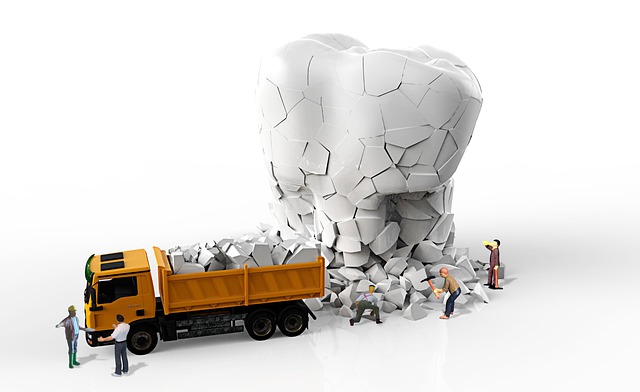
Image by Wilfried Pohnke from Pixabay
11 Ways Toxic Dental Care Can Make You Sick
I do not like going to the dentist for a wide range of reasons—from bad experiences with hygienists to a slew of dental procedures that have cost tens of thousands of dollars. But there is something else, too. The materials and practices used by your dentist may just be toxic—and toxic dental care can make you sick.
Things to Keep in Mind
- Dentists and hygienists look for what they are trained to find. It may be difficult for them to see problems and solutions that are outside the box of their professional paradigm.
- The problems caused by toxic dental material may be masked by symptoms that mimic other medical conditions.
4 Things You Didn’t Know About Your Dentist
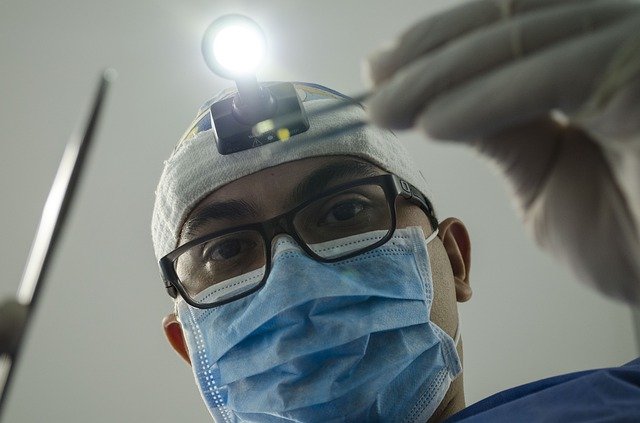
Image by Rafael Juárez from Pixabay
-
Dentists and hygienists continue learning as part of their license requirements. Who pays for this education? Many times, the companies that make the dental tools and materials are the ones sponsoring these workshops and other events. These companies have a financial incentive to push their own products, rather than natural alternatives.
-
Many dentists don’t have the latest technology. It could cost upward of $200,000 to update his or her equipment to provide the best possible care. Does your dentist’s office have upgraded equipment?
-
The American Dental Association (ADA) and the U.S. Food and Drug Administration (FDA) do not have a problem with mercury-based amalgam fillings. Holistic dentists say these fillings are full of toxins, and that you’d be wise to limit your exposure to them.1)Podcast. “Toxic Dental Materials.” The Center For Natural Dentistry. Accessed September 10, 2019. http://naturaldentistry.us/3875/toxic-dental-materials/. Is your dentist still using these poisonous materials?
-
Dentistry is a very broad field with many specialized areas. It is likely that your dentist may refer you to a specialist for root canals, orthodontic appliances, or other procedures. It is always acceptable to get a second opinion before seeing a specialist or having any procedures performed. If your dentist discourages you from getting a second opinion, then you are probably right to seek one. And remember, you always have the right to refuse or delay treatment.
Toxic Dental Care: What Are They Putting in Your Mouth?
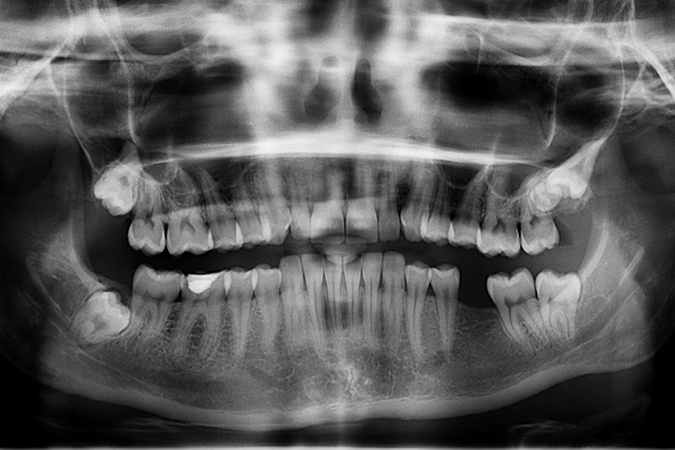
X-rays
Are X-rays always necessary? X-rays are a useful diagnostic tool. But they aren’t a dentist’s only tool. Toxic dental care may include repeated, unnecessary X-ray exposure, which can increase your risk of cancer.2)Boyles, Salynn. “Dental X-Rays Linked to Brain Tumors.” WebMD. WebMD, April 10, 2012. https://www.webmd.com/cancer/brain-cancer/news/20120410/dental-x-rays-linked-brain-tumors#1.
You May Also Enjoy:
“Equisetum Hyemale (Horsetail): The BEST Plant for Tooth Health + 8 More Benefits!”
“Is the Fruit You Eat Bad for Your Teeth?”
Sealants
Dental sealants are coatings of thin plastic applied to the teeth to prevent decay. The sealants prevent food particles and bacteria from getting into the grooves of the teeth, where it is difficult to brush. Sealants last about 5 to 10 years.
There is some concern that undetected decay can be sealed onto teeth, which will quietly continue to decay the tooth. A cracked or worn sealant could also allow decay to form and spread, hidden beneath the sealant.
Sealants may also contain BPA (bisphenol A), a chemical used in some plastics, which has been associated with health and development problems in humans and animals. Dental sealants are derived from BPA, but rarely contain BPA in its full form. Because of this, they might technically be described as BPA-free. However, as the sealant breaks down it interacts with saliva to form BPA.3)”What Are Dental Sealants?” Dr. Tim Verwest DMD Associates, n.d. http://drverwest.com/what-are-dental-sealants-and-does-my-child-need-them
Fluoride
When it comes to toxic dental care, fluoride is a chemical that is followed by no small controversy. Are the benefits worth the risks? Regardless of your stand on the virtue or villainy of fluoride, we can agree on two things.
- Fluoride is categorized as a drug.
- Fluoride’s effects on teeth come mainly from surface contact.
Within the modern dental industry, we can understand why most dentists recommend fluoridated toothpaste and mouth rinse. But why do dentists recommend fluoridated drinking water?
Can you think of any other drug that has been mass administered to an entire population? Neither can I. The dosage of fluoride is impossible for regulators to calculate, due to everyone’s different drinking habits. It goes to everyone, from infants to the elderly, from the sick to the healthy, and even to those with fluoride sensitivities. Mass medication of fluoride also ignores the possible interactions with other medications.
UPDATE 10/10/20: We now offer 100% pure, powdered Equisetum hyemale—hand-wildcrafted in pristine wilderness areas—in the TGN store. Click here to get yours!
Fluoride exposure is very hard to opt-out of, due to its presence in the tap water and products made with water. It is also not removed by most home water filters, forcing those of us concerned with fluoride exposure to buy costly, specialized systems. And if that filtration system doesn’t include your sinks and showers, you can still absorb the fluoride through your skin or breathe it in through the steam of a hot shower.
Thankfully, many European countries do not fluoridate their water. But if you live in the United States or one of the other fluoridating countries of the world, you should be aware of the adverse effects of fluoride ingestion.
- Intelligence: Scientists have found dementia-like effects, as well as lower IQ levels associated with fluoride ingestion.4)Russ, Tom C., Lewis O. J. Killin, Jean Hannah, G. David Batty, Ian J. Deary, and John M. Starr. “Aluminium and Fluoride in Drinking Water in Relation to Later Dementia Risk: The British Journal of Psychiatry.” Cambridge Core. Cambridge University Press, March 14, 2019. https://www.cambridge.org/core/journals/the-british-journal-of-psychiatry/article/aluminium-and-fluoride-in-drinking-water-in-relation-to-later-dementia-risk/14AF4F22AC68C9D6F34F9EC91BE37B6D.
- Thyroid: Fluoride is an endocrine disrupter, which can lead to problems with judgment and intellect, depression, and weight gain.
- Pineal Gland: While scientifically categorized as a regulatory gland, this brain structure is often called the “third eye.” It is often linked with personality, spirituality, or even psychic abilities. The pineal gland is highly vulnerable to calcification from fluoride exposure and is not protected by the blood-brain barrier. Calcification can alter or inhibit its correct function.5)Luke, J. “Fluoride Deposition in the Aged Human Pineal Gland.” Caries Research35, no. 2 (2001): 125–28. https://doi.org/10.1159/000047443.
- Bones: Fracture risks may increase with fluoride ingestion. There is also a 2005 study by Harvard scientists that found a connection between fluoride and osteosarcoma, a serious form of bone cancer in males under 20 years of age.6)“Harvard Study: Strong Link Between Fluoridated Water and Bone Cancer in Boys.” EWG. Accessed September 10, 2019. https://www.ewg.org/news/news-releases/2006/04/06/harvard-study-strong-link-between-fluoridated-water-and-bone-cancer. However, it’s important to note that a 2011 article in the “Journal of Dental Research” says the “association between fluoride and risk for osteosarcoma is controversial” and goes on to add that “no significant association between bone fluoride levels and osteosarcoma risk was detected in our case-controlled study, based on controls with other tumor diagnoses.”7)Kim, F M, C Hayes, P L Williams, G M Whitford, K J Joshipura, R N Hoover, C W Douglass, and National Osteosarcoma Etiology Group. “An Assessment of Bone Fluoride and Osteosarcoma.” Journal of Dental Research. SAGE Publications, October 2011. https://www.ncbi.nlm.nih.gov/pmc/articles/PMC3173011/.
- Kidneys: People with kidney disease have a higher risk of fluoride toxicity.8)Sayanthooran, Saravanabavan, Lishanthe Gunerathne, Tilak D. J. Abeysekera, and Dhammika N. Magana-Arachchi. “Transcriptome Analysis Supports Viral Infection and Fluoride Toxicity as Contributors to Chronic Kidney Disease of Unknown Etiology (CKDu) in Sri Lanka.” International Urology and Nephrology50, no. 9 (2018): 1667–77. https://doi.org/10.1007/s11255-018-1892-z.
The bottom line? Fluoridated water has not been proven to have any effect at slowing tooth decay, though fluoride toothpastes may have some benefit. But use caution. Fluoride also has some serious health risks.9)Helmenstine, Anne Marie. “How Fluoride Prevents Tooth Decay.” ThoughtCo. ThoughtCo, August 11, 2018. https://www.thoughtco.com/how-fluoride-works-prevent-tooth-decay-607857.
Hazardous Materials and Practices Used in Toxic Dental Care
How toxic are the fillings, crowns, sealants, and other materials dentists use to care for your teeth? And how necessary (or harmful) are some of the most common dental procedures? Here are just a few things to consider when you’re looking into toxic dental care:
Fillings
Fillings can be made out of plastic (also called composite and resin), glass ionomer cement, and amalgam (metal).
For more than 150 years, amalgam has been a popular dental filling material. Modern amalgams are produced from an alloy of 42–45% mercury, with the balance made of zinc, tin, silver, and copper.10)Rathore, Monika, Archana Singh, and Vandana A Pant. “The Dental Amalgam Toxicity Fear: a Myth or Actuality.” Toxicology international. Medknow Publications & Media Pvt Ltd, May 2012. https://www.ncbi.nlm.nih.gov/pmc/articles/PMC3388771/.
Whether or not the mercury in amalgam leaks at levels of “practical or clinical significance” is up for debate, although even proponents of traditional dentistry admit that some mercury is released after the amalgam is placed in the tooth, and more is released when the filling is inserted or removed.11)Rathore, Monika, Archana Singh, and Vandana A Pant. “The Dental Amalgam Toxicity Fear: a Myth or Actuality.” Toxicology international. Medknow Publications & Media Pvt Ltd, May 2012. https://www.ncbi.nlm.nih.gov/pmc/articles/PMC3388771/
You May Also Enjoy:
Mercury is a poisonous and known neurotoxin, and the other metals in amalgam alloys can cause health issues, as well.12)Podcast. “Toxic Dental Materials.” The Center For Natural Dentistry. Accessed September 10, 2019. http://naturaldentistry.us/3875/toxic-dental-materials/. Apart from overall toxicity issues, individual hypersensitivity to any of these metals can also be a concern.
Crowns and Bridges
Crowns and bridges can be made from a variety of materials. Some may contain nickel, beryllium, chromium, palladium, all of which can have toxic side effects.13)“Nickel Compounds—Cancer-Causing Substances.” National Cancer Institute. Accessed September 10, 2019. https://www.cancer.gov/about-cancer/causes-prevention/risk/substances/nickel.14)Podcast. “Toxic Dental Materials.” The Center For Natural Dentistry. Accessed September 10, 2019. http://naturaldentistry.us/3875/toxic-dental-materials/. Be sure to ask your dentist about your options and the materials that will be used.
One option to consider is a zirconium crown or bridge. While not perfect, zirconium is generally considered to be more biocompatible than other materials. Also, it will last longer than other materials and is more durable than your original tooth structure.15)“What Are Fillings and Crowns Made Of?” Wrigleyville Dental, March 7, 2018. https://www.wrigleyvilledental.com/blog/what-are-dental-materials-made-of/.
Polishing
The polishers that hygienists use can contain fluoride, sugars, and pumice. Frequent polishing could potentially remove tooth enamel. But don’t panic. Polishing at twice-yearly checkups is unlikely to cause significant damage.16)Louis, Catherine Saint. “Ask Well: Is Tooth Polishing Necessary?” The New York Times. The New York Times, December 4, 2015. https://well.blogs.nytimes.com/2015/12/04/ask-well-is-tooth-polishing-necessary/.
Polishing is necessary after certain dental procedures, but may not be needed with every visit. Ask your dentist to be sure.
Deep-Cleaning or Scaling
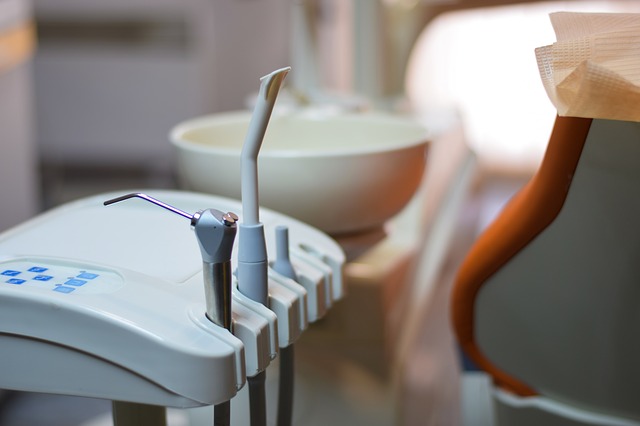
Image by ExplorerBob from Pixabay
If you haven’t had the “pleasure” of experiencing this deep-cleaning method, it is high-pressure water that is shot between your teeth and gums to remove tartar and plaque.
Experts say it won’t harm your teeth or gums, and helps prevent gingivitis and periodontal disease. However, there are some potential risks that you should be aware of:
- People with compromised immunity, certain heart conditions, or other medical issues may have increased risks involved with this procedure and should consult their dentist. You may also be required to take antibiotics before undergoing a deep-cleaning or scaling.
- Inappropriate teeth scaling may contribute to gum or periodontal disease when bacteria and food debris accumulate in the pockets left by the scaling procedure.
- If your teeth are already sensitive, teeth scaling can temporarily increase your sensitivity to hot or cold food and drink.
In the Pocket
Dentists have to listen to a lot of different voices. Big corporations, pharmaceutical companies, and other members of the dental community are all telling them what procedures are the best and what chemicals or devices they should be using. And if some piece of truth or a better method lies outside of the industry paradigm, it can be hard to find. Pursuing truth against the will of the establishment might even cost them their license.
You want a dentist who is well-versed in the latest theory and methodology. But you also want to make sure that your dentist is willing to look beyond the paradigm and stay out of the pocket of pharmaceutical companies.
Out of YOUR Pocket
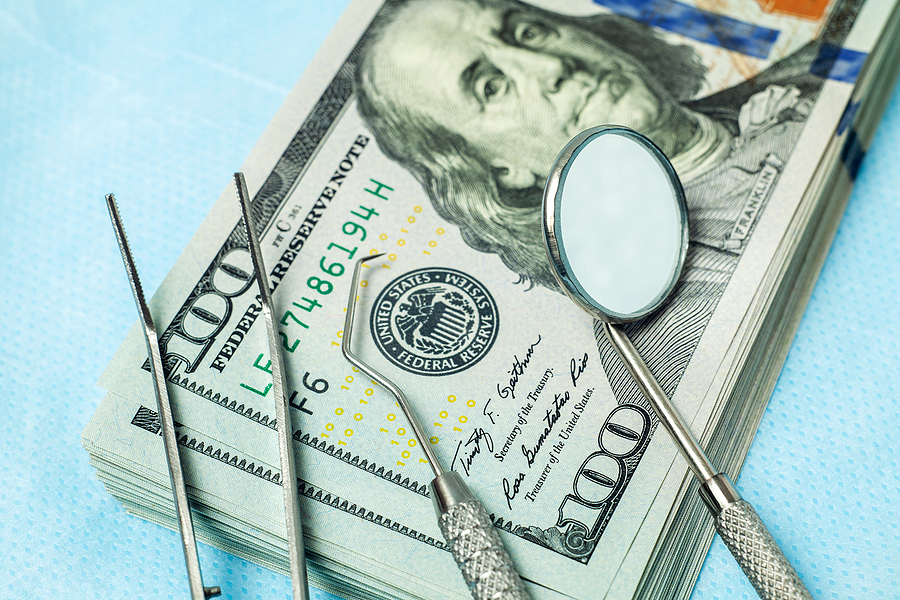
The cost of dental care can be prohibitive. In fact, in 2016, the percentage of the U.S. population who needed to see a dentist in the previous 12 months but didn’t due to cost was 8.9 percent—significantly higher than in any other health care industry.
Buying an individual dental insurance policy costs an average of $350 per year, plus out-of-pocket expenses since insurance generally covers only a portion of the actual costs of remedial procedures. For example, in 2013, Americans paid their dentists an out-of-pocket average of $544 each.17)DiGiacomo, Robert. “Is Dental Insurance Worth The Cost?” Bankrate. Bankrate.com, July 23, 2018. https://www.bankrate.com/finance/insurance/dental-insurance-1.aspx.
You May Also Enjoy:
“How to Choose a Natural Dentist”
Of course, different dentists charge different rates, but you can get an idea of what you might expect to pay for services (sans insurance) at the site HealthcareBluebook.com. (In Houston, TX, for example, you could expect to pay between $96 and $250 for a regular checkup, between $80 and $208 for a panoramic dental X-ray, and between $216 and $567 for a resin or composite filling on a large cavity. The cost of bridges, crowns, periodontics, etc., goes up from there.)
It was George Carlin who said, “Somewhere in the United States is the worst dentist. And what’s terrifying is that someone has an appointment with him or her tomorrow morning.”
My hope is that the information in this article can help ensure that’s not you!
And maybe, just maybe, as patients begin to see the dangers inherent in some common dental practices and insist on healthier procedures and materials, it will persuade the establishment to take a closer, more conscientious look at the dental industry—and make changes that just might save lives.
_________________
The Grow Network is a participant in the Amazon Services LLC Associates Program, an affiliate program designed to provide a means for our team to earn fees for recommending our favorite products! We may earn a small commission, at no additional cost to you, should you purchase an item after clicking one of our links. Thanks for supporting TGN!

The Grow Network is a global network of people who produce their own food and medicine. We’re the coolest bunch of backyard researchers on Earth! We’re constantly sharing, discovering, and working together to test new paths for sustainable living—while reconnecting with the “old ways” that are slipping away in our modern world. We value soil, water, sunlight, simplicity, sustainability, usefulness, and freedom. We strive to produce, prepare, and preserve our own food and medicine, and we hope you do, too!
References
| ↑1, ↑12, ↑14 | Podcast. “Toxic Dental Materials.” The Center For Natural Dentistry. Accessed September 10, 2019. http://naturaldentistry.us/3875/toxic-dental-materials/. |
|---|---|
| ↑2 | Boyles, Salynn. “Dental X-Rays Linked to Brain Tumors.” WebMD. WebMD, April 10, 2012. https://www.webmd.com/cancer/brain-cancer/news/20120410/dental-x-rays-linked-brain-tumors#1. |
| ↑3 | ”What Are Dental Sealants?” Dr. Tim Verwest DMD Associates, n.d. http://drverwest.com/what-are-dental-sealants-and-does-my-child-need-them |
| ↑4 | Russ, Tom C., Lewis O. J. Killin, Jean Hannah, G. David Batty, Ian J. Deary, and John M. Starr. “Aluminium and Fluoride in Drinking Water in Relation to Later Dementia Risk: The British Journal of Psychiatry.” Cambridge Core. Cambridge University Press, March 14, 2019. https://www.cambridge.org/core/journals/the-british-journal-of-psychiatry/article/aluminium-and-fluoride-in-drinking-water-in-relation-to-later-dementia-risk/14AF4F22AC68C9D6F34F9EC91BE37B6D. |
| ↑5 | Luke, J. “Fluoride Deposition in the Aged Human Pineal Gland.” Caries Research35, no. 2 (2001): 125–28. https://doi.org/10.1159/000047443. |
| ↑6 | “Harvard Study: Strong Link Between Fluoridated Water and Bone Cancer in Boys.” EWG. Accessed September 10, 2019. https://www.ewg.org/news/news-releases/2006/04/06/harvard-study-strong-link-between-fluoridated-water-and-bone-cancer. |
| ↑7 | Kim, F M, C Hayes, P L Williams, G M Whitford, K J Joshipura, R N Hoover, C W Douglass, and National Osteosarcoma Etiology Group. “An Assessment of Bone Fluoride and Osteosarcoma.” Journal of Dental Research. SAGE Publications, October 2011. https://www.ncbi.nlm.nih.gov/pmc/articles/PMC3173011/. |
| ↑8 | Sayanthooran, Saravanabavan, Lishanthe Gunerathne, Tilak D. J. Abeysekera, and Dhammika N. Magana-Arachchi. “Transcriptome Analysis Supports Viral Infection and Fluoride Toxicity as Contributors to Chronic Kidney Disease of Unknown Etiology (CKDu) in Sri Lanka.” International Urology and Nephrology50, no. 9 (2018): 1667–77. https://doi.org/10.1007/s11255-018-1892-z. |
| ↑9 | Helmenstine, Anne Marie. “How Fluoride Prevents Tooth Decay.” ThoughtCo. ThoughtCo, August 11, 2018. https://www.thoughtco.com/how-fluoride-works-prevent-tooth-decay-607857. |
| ↑10 | Rathore, Monika, Archana Singh, and Vandana A Pant. “The Dental Amalgam Toxicity Fear: a Myth or Actuality.” Toxicology international. Medknow Publications & Media Pvt Ltd, May 2012. https://www.ncbi.nlm.nih.gov/pmc/articles/PMC3388771/. |
| ↑11 | Rathore, Monika, Archana Singh, and Vandana A Pant. “The Dental Amalgam Toxicity Fear: a Myth or Actuality.” Toxicology international. Medknow Publications & Media Pvt Ltd, May 2012. https://www.ncbi.nlm.nih.gov/pmc/articles/PMC3388771/ |
| ↑13 | “Nickel Compounds—Cancer-Causing Substances.” National Cancer Institute. Accessed September 10, 2019. https://www.cancer.gov/about-cancer/causes-prevention/risk/substances/nickel. |
| ↑15 | “What Are Fillings and Crowns Made Of?” Wrigleyville Dental, March 7, 2018. https://www.wrigleyvilledental.com/blog/what-are-dental-materials-made-of/. |
| ↑16 | Louis, Catherine Saint. “Ask Well: Is Tooth Polishing Necessary?” The New York Times. The New York Times, December 4, 2015. https://well.blogs.nytimes.com/2015/12/04/ask-well-is-tooth-polishing-necessary/. |
| ↑17 | DiGiacomo, Robert. “Is Dental Insurance Worth The Cost?” Bankrate. Bankrate.com, July 23, 2018. https://www.bankrate.com/finance/insurance/dental-insurance-1.aspx. |
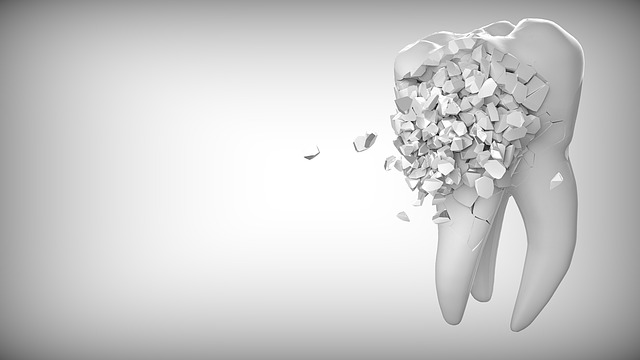

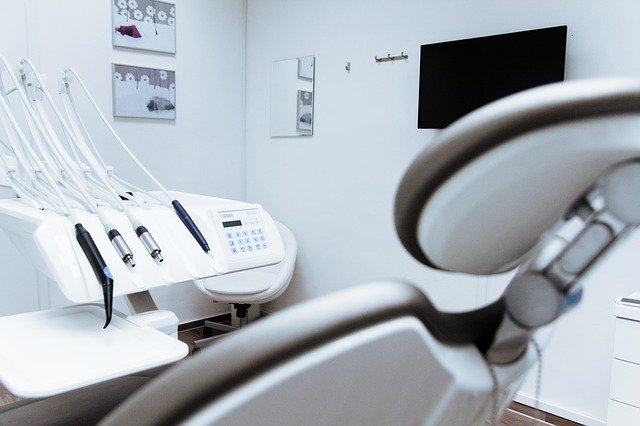








COMMENTS(3)
THANK YOU. THIS INFORMATION IS LIKE SO HEALPFUL. THANKS AGAIN SO VERY MUCH
Hi,
I was so disappointed to read this article. Although some of the information is true, there is a lot of misleading information, as well as the whole article on “deep cleaning” is not accurate at all. I am a Registered Dental Hygienist. The statement that deep cleaning uses high pressure water is completely incorrect (as well as a link to Amazon for a water pik???). Hygienists may use an ultrasonic scaler which is what removes the deposits as well as the endotoxins released by bacteria. This is accompanied by water to cool the instrument and flush the pocket. Water will not remove Calculus (tartar) only mechanical removal can do that. either using an Ultrasonic or hand scaling with instruments (scraping it off). The actual cleaning process may increases the bacterial load at the time o removal, but what is really causing the damage is the fact there is Calculus or bacteria there in the first place. As this is there permanently until removed it causes an ongoing state of disease. Removing it and preventing it from recurring is what will bring you mouth back to health. This article suggests otherwise with NO references.
There are definitely issues with mercury fillings and fluoride toxicity. The dental insurance companies often refuse to pay for the safer fillings because it costs more. Unless this changes, people will still be stuck with getting mercury fillings because they can’t afford any other option (even it mercury causes further health and neurological issues). People need to be informed.